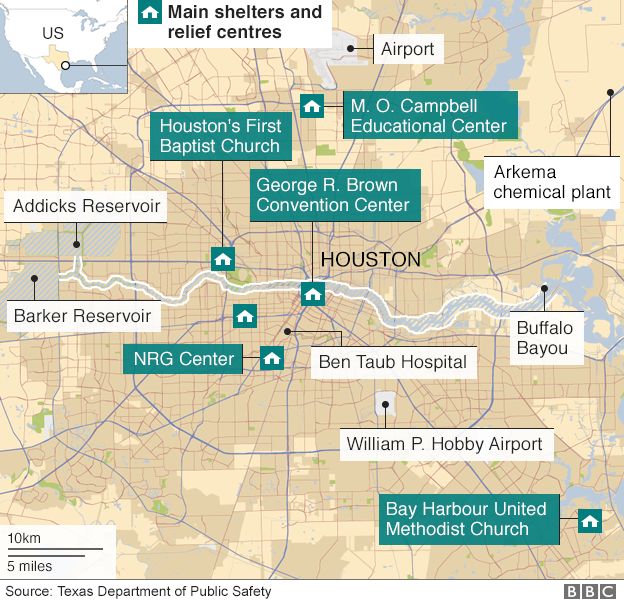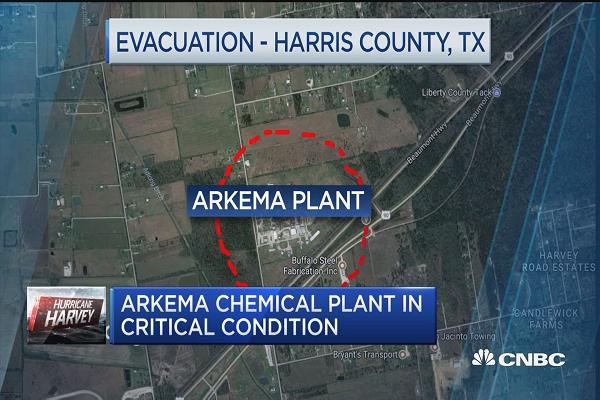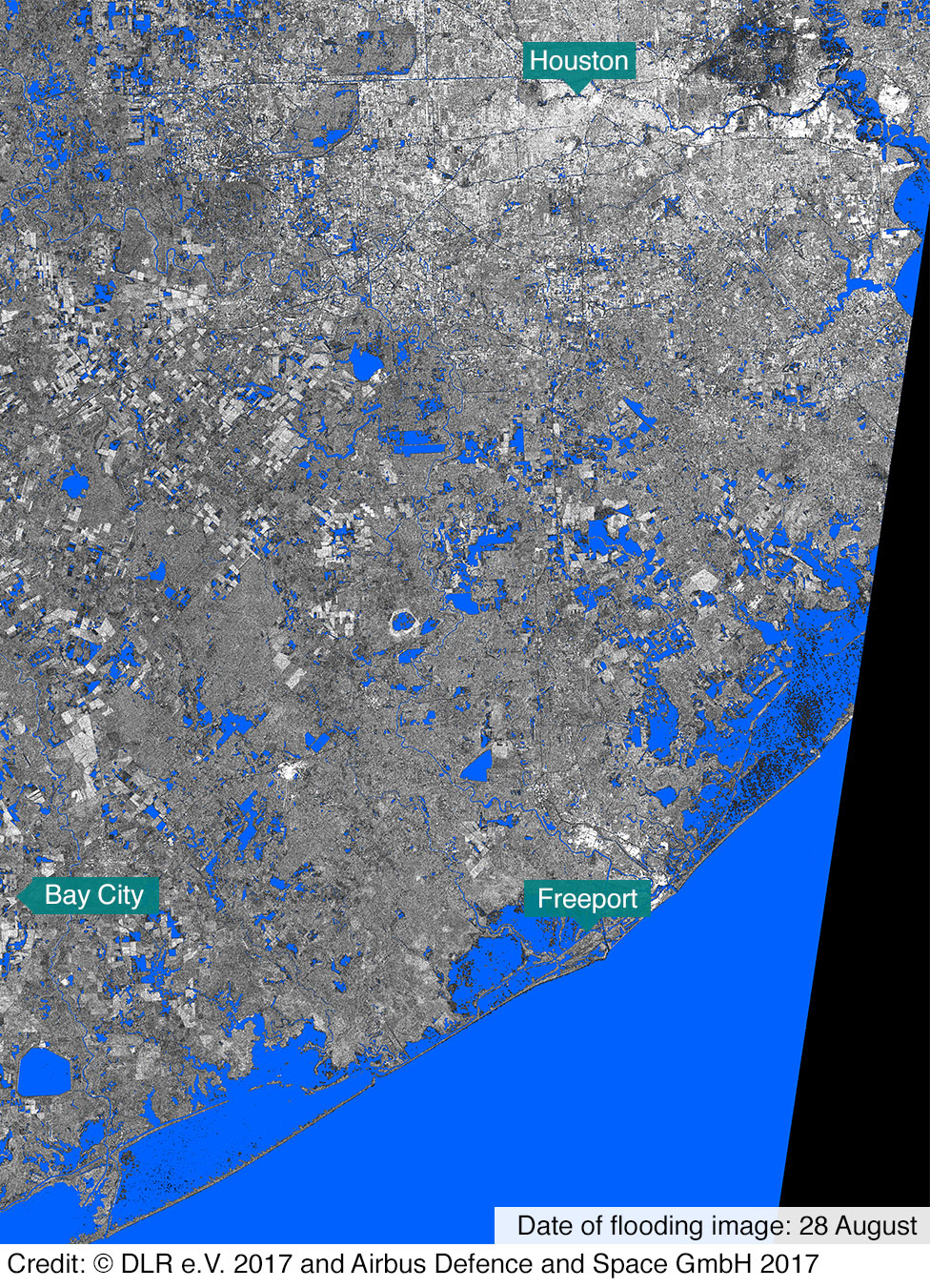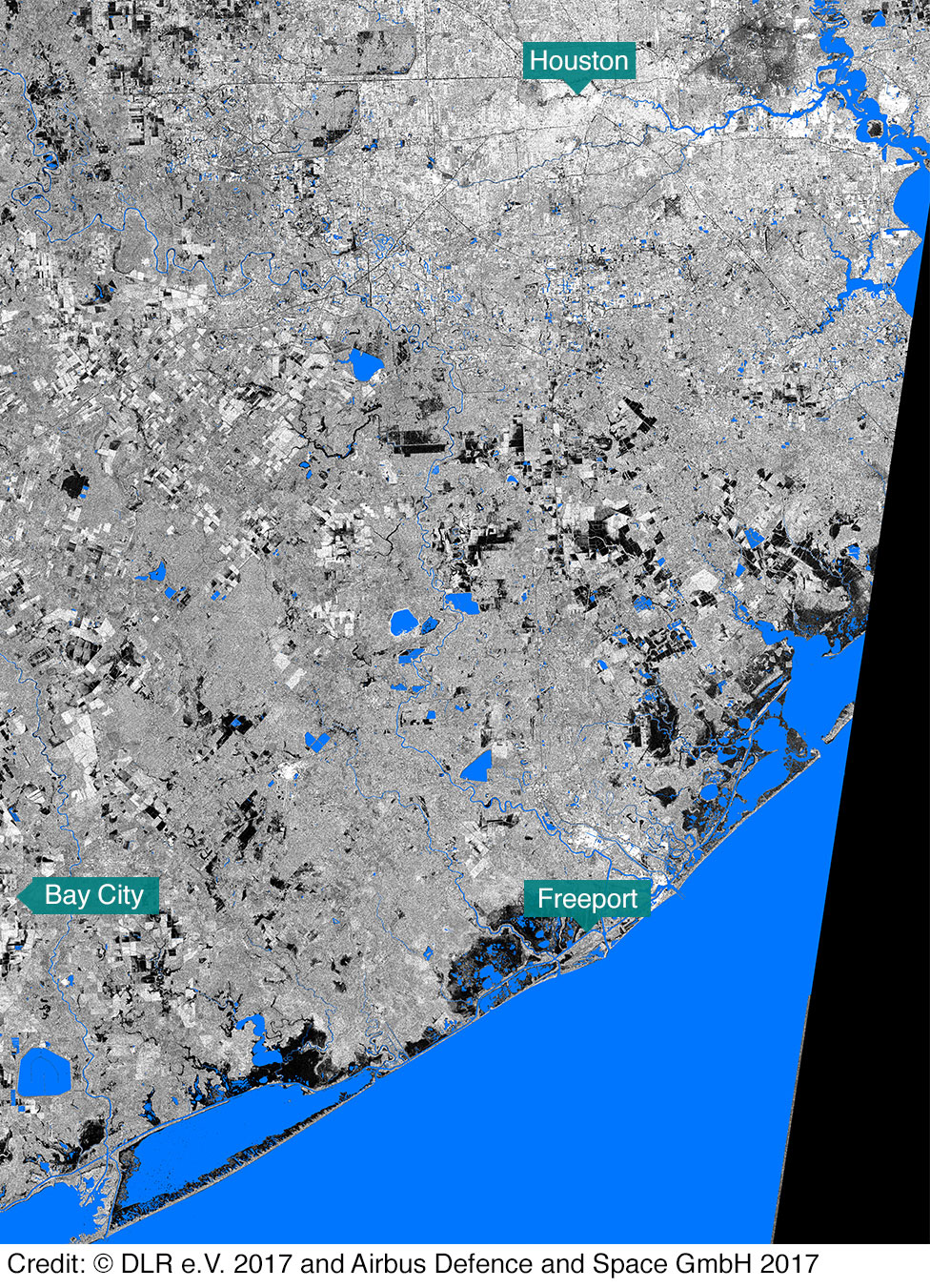Houston flood: ‘Dangerous’ chemical leak from Arkema plant
BBC
A plume of smoke seen issuing from a flood-damaged chemical plant near the storm-hit US city of Houston is “incredibly dangerous”, the head of the US emergency agency Fema has said.
Brock Long said officials were still trying to evaluate the situation at Arkema’s chemical plant in Crosby.
A police officer at the site was hospitalised after inhaling fumes. Nine others were admitted as a precaution.
Arkema said it thought a “non-toxic irritant” had been released.
Harris County sheriff Ed Gonzales said the release was not believed to have been a result of an explosion, despite earlier reports of blasts.
Residents living within a 1.5-mile (2.4km) radius of the plant were evacuated after the company warned there was a risk of explosions and fire.
During heavy rainfall from Hurricane Harvey, the complex lost the ability to refrigerate chemical compounds that need to be kept cool.
Speaking at a news conference in Washington, Mr Long said it was not clear whether his staff could get into the plant to assess to full impact of the leak.
“The bottom line is that we do what’s called plume modelling and that’s what we base a lot of the evacuations on. And so, by all means, yes, the plume is incredibly dangerous,” he said.
In an earlier statement, Arkema said: “At approximately 2am CDT [07:00 GMT], we were notified by the Harris County Emergency Operations Center of two explosions and black smoke coming from the Arkema Inc plant in Crosby, Texas.
“We want local residents to be aware that product is stored in multiple locations on the site, and a threat of additional explosion remains.
“Please do not return to the area within the evacuation zone until local emergency response authorities announce it is safe to do so.”
Door-to-door search
At least 33 people have been killed in eastern Texas in the aftermath of the storm, which the US National Weather Service has now downgraded to a tropical depression.
Heavy rainfall is expected from Louisiana to Kentucky over the next three days, and flood warnings remain in effect for south-east Texas and parts of south-west Louisiana.
US energy supplies have been hit, as oil companies shut down refineries and a major pipeline in the Houston area.
- Harvey shuts key pipeline to East Coast
- US accepts Mexico flood aid offer
- Why was Houston not evacuated?
- Hurricane Harvey: The climate link
Firefighters are due to begin a door-to-door search of badly flooded areas of Houston on Thursday, to rescue survivors who are still stranded and recover the bodies of those who have died.
“We’ll be doing block-by-block, door-by-door search of streets… to make sure there are no people we’ve left behind,” Richard Mann, the city’s assistant fire chief, was quoted as saying by the Houston Chronicle newspaper.
“This will be a one- to two-week-long process to make sure we address all those areas that have been… most impacted.”
What happened at the chemical plant?
The Arkema chemical plant, 21 miles from Houston, shut down production on Friday before the storm made landfall.
But 40in (102cm) of rainfall in the area had flooded the site and cut off its power, the company said. Back-up generators were also flooded.
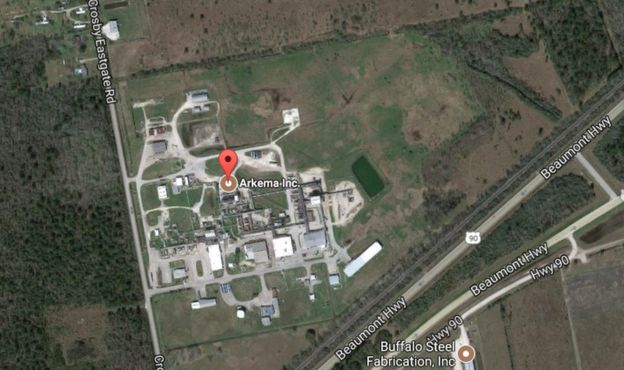 GOOGLE
GOOGLE
The facility manufactures organic peroxides, compounds used in everything from making pharmaceuticals to construction materials, which can become dangerous at higher temperatures.
“Any fire will probably resemble a large gasoline fire,” CEO Richard Rowe told Reuters news agency before the reports of the leak emerged. “The fire will be explosive and intense.”
He said the black smoke produced would irritate the skin, eyes and lungs.
“The high water that exists on site, and the lack of power, leave us with no way to prevent it.”
The last remaining workers at the site were evacuated on Tuesday.
The Federal Aviation Administration has issued a temporary ban on flights near the plant.
How are rescue efforts progressing?
Parts of Texas have been hit by more than 50in of rainfall since Hurricane Harvey landed on 25 August, setting new records before it was downgraded to a tropical storm and, late on Wednesday, to a tropical depression.
Rescue efforts continued overnight. Thousands of people have been rescued from the floodwaters, and more than 32,000 people are being housed in emergency shelters.
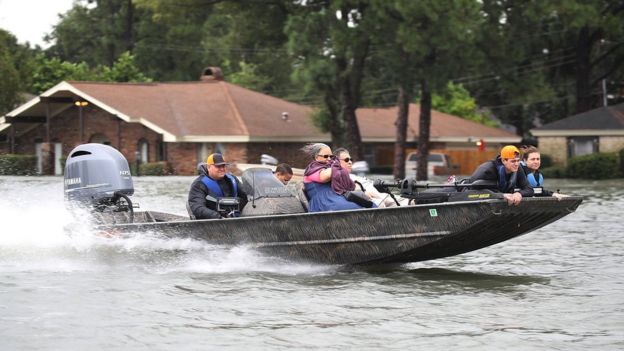 GETTY IMAGES – Port Arthur is among the areas severely flooded
GETTY IMAGES – Port Arthur is among the areas severely flooded
Large parts of Houston, the fourth most populous city in the US, remain under water.
The city is also a key energy hub. The storm and its subsequent flooding has knocked out about a quarter of the country’s refining capacity, sending petrol prices to a two-year high.
The Colonial Pipeline, which carries more than 100 million gallons of petrol, heating oil and aviation fuel between Houston and the east coast each day, has been shut.
Port Arthur, about 80 miles east of Houston, was also severely flooded. Mayor Derrick Freeman, posting on Facebook, said the entire city was under water, and appealed for anyone who owned a boat to help.
Details of some of those who died in Texas have emerged:
- In Beaumont, north-west of Port Arthur, rescue teams saved an 18-month old girl found clinging to her dead mother in the floodwaters
- In Harris County, the bodies of six people – a couple and their four great-grandchildren – were recovered from a submerged van
- A married couple drowned when their truck was swept away while they were on the phone to emergency services asking for help, the Associated Press reports
“To those Americans who have lost loved ones, all of America is grieving with you, and our hearts are joined with yours forever,” President Donald Trump said in a speech on Wednesday, a day after visiting Texas.
On Tuesday, Houston implemented a curfew to prevent looting of abandoned homes. Port Arthur followed suit on Wednesday.
What happens next?
An additional 10,000 members of the National Guard are on their way to Texas to join the rescue efforts, adding to the 14,000 troops already deployed.
Harvey was the most powerful hurricane to hit Texas in more than 50 years when it first made landfall at Corpus Christi, 220 miles south-west of Houston last week.
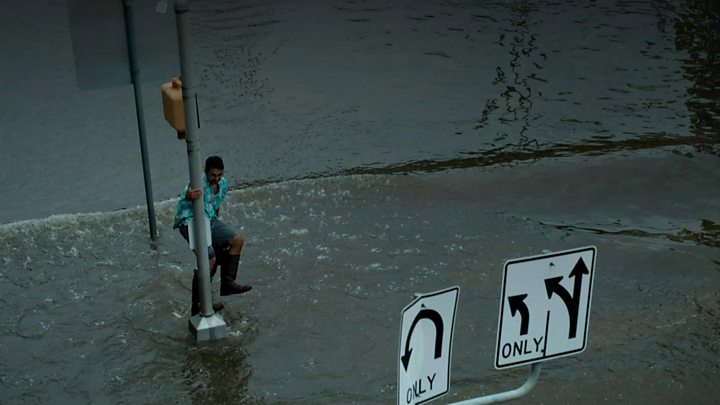 The numbers behind Storm Harvey
The numbers behind Storm HarveyAt a news conference on Wednesday, Texas Governor Greg Abbott said the state could need more than $125bn (£97bn) from the federal government to help it recover.
Mr Abbott has accepted an offer of aid from the Mexican government, which has suggested it is willing to despatch troops with food, water and medicine – as it did in 2005 when New Orleans was devastated by Hurricane Katrina.
US Secretary of State Rex Tillerson said it was “very generous of Mexico to offer their help at this very, very challenging time for our citizens down in Texas”.
The move comes amid tension between the two countries over President Donald Trump’s repeated promises to build a vast border wall on the southern US border to keep out illegal immigrants and criminals, and to make Mexico pay for it.
